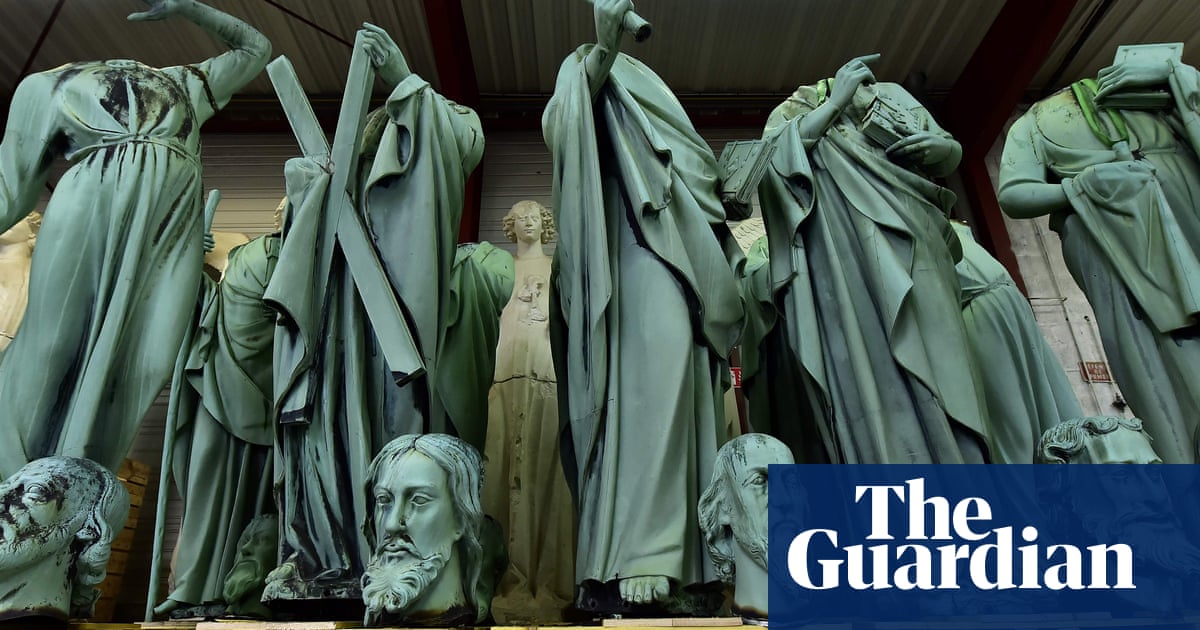Sixteen giant statues are to be hoisted back on to the spire of Notre Dame in the latest step of the cathedral’s €700m (£600m) reconstruction after thedevastating fire of 2019.
The copper-coated figures, each weighing almost 150kg, escaped the blaze because they were removed from the Parisian landmark for renovation just four days before flames consumed the roof and destroyed the spire.
On Monday evening, after a blessing from the archbishop of Paris, Laurent Ulrich, the statue of St Thomas will be returned to the reconstructed spire. The depictions of the 11 other apostles and four evangelists will be put back “in stages” according to theNotre Dameteam.
The statues were designed by Eugène Viollet-le-Duc for his 19th-century overhaul of Notre Dame and made by the sculptor, Adophe Victor Geoffroy-Dechaume.
Installed in 1861, the apostles are 3.4 metres (11ft) tall and arranged in four groups around the 96-metre (315ft) spire, which was added by Viollet-le-Duc in 1858.
In front of each group is a statue of an evangelist: a bull for Saint Luke, a lion for Saint Mark, an eagle for Saint John and an angel for Saint Matthew. All the statues look out over Paris except for that of Saint Thomas, the patron saint of architects who looks toward the spire and is said to be modelled on Viollet-le-Duc.
The statues have undergone a complete renewal, with damaged parts replaced and corrosion removed, returning them to their original dark brown colour. They have also been Teflon-proofed against damage from the elements. During the renovation, workers discovered bullet holes on the statue of Saint Mark thought to date back to the second world war.
The statues will stand in their original places below the spire’s new golden rooster, a symbol of hope and faith and an emblem ofFrance. Installed last December, it houses cathedral relics and a sealed tube holding a list of almost 2,000 people who have worked on the cathedral’s reconstruction since the fire on 15 April 2019.
The spire’s original rooster survived the fire and was discovered battered but intact among the debris. It is on display at Paris’sarchitecture and heritage museumbut will be moved to a new museum dedicated to Notre Dame.
Sign up toHeadlines Europe
A digest of the morning's main headlines from the Europe edition emailed direct to you every week day
after newsletter promotion
The cathedralwas officially reopened last Decemberby Emmanuel Macron in a ceremony attended by world leaders, including the French president’s counterparts, Donald Trump and Volodymyr Zelenskyy.
